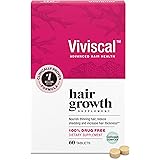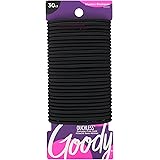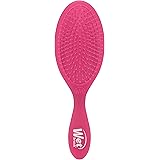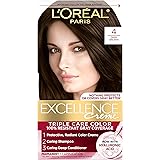Introduction to Volume Boosting with Layers
Elevating hair volume is a common desire for many, particularly those with fine or limp hair. One of the most effective methods to achieve a fuller appearance is through the art of layering. Layering involves cutting hair at various lengths, and this technique is pivotal in creating body and movement. The interplay of different lengths generates dimension and texture, resulting in a more robust look that exudes vitality.
The fundamental principle behind volume-boosting layers lies in their ability to remove excess weight from the hair, allowing it to bounce and move freely. When hair is cut in layers, it creates openings through which light can penetrate, enhancing the perception of fullness. Moreover, layers can frame the face, adding a flattering effect that complements various facial features while contributing to the overall volume.
In addition to aesthetics, layered hairstyles are also versatile, lending themselves well to a variety of styling options. Whether an individual prefers a sleek, polished look or more tousled, beachy waves, layered hair can effortlessly accommodate these styles. Products aimed at boosting volume further enhance the layered effect and can be tailored to what works best for one’s hair texture and type. Many modern hairstyles incorporate layers, reflecting a contemporary trend that prioritizes volume and movement.
As we delve deeper into this topic, it is essential to explore specific techniques, tips, and styles that maximize volume through layering. Understanding the nuances of layering can empower individuals to make informed decisions when it comes to styling their hair, helping them achieve the lush, voluminous hairstyle they desire.
Understanding Different Hair Types for Layering
When it comes to mastering hair layering techniques, understanding the unique characteristics of various hair types is essential. Hair can generally be classified into four main categories: straight, wavy, curly, and coily. Each type requires customized layering methods to achieve optimal volume and style.
Straight hair is often characterized by its sleek appearance and smooth texture. This type typically lays flat and lacks natural volume. When layering straight hair, utilizing long, graduated layers can create movement and enhance volume at the roots. Adding face-framing layers can also help to provide dimension without compromising the overall length of the hair.
Wavy hair offers a blend of texture and volume, making it versatile for different styles. The natural wave pattern creates body, but strategic layering is still essential to prevent the hair from looking bulky. Layers should be placed strategically to highlight the waves while maintaining their natural bounce. Soft, textured layers can add depth and enhance the wave pattern, imparting a tousled, voluminous look.
Curly hair is distinct for its bounce and definition, often appearing fuller than the other hair types. However, improper layering can lead to the dreaded “pyramid” shape. To maximize volume while keeping curls defined, it is advisable to incorporate shorter layers throughout. This technique allows curls to spring up, promoting a fuller silhouette without weighing them down.
Coily hair, known for its tight curls and intricate texture, requires careful consideration for effective layering. This type often thrives on moisture, and layering should aim to distribute weight evenly. Long layers can create movement while preserving the hair’s natural curl pattern. Implementing crescent-shaped layers can also enhance the shape and give the appearance of more volume.
Understanding these unique characteristics is vital for customizing layering techniques. Whether you have straight, wavy, curly, or coily hair, tailoring your layering approach can result in stunning volume and a professional finish that suits your specific hair type.
Choosing the Right Layering Technique
Selecting an appropriate layering technique is crucial for achieving the desired volume boost in your hair. Different hair types and textures can significantly influence which method would be most effective. Understanding the various layering techniques—such as long layers, short layers, and graduated layers—can help in making an informed decision.
Long layers are often favored for those with thicker hair. This technique involves cutting long sections into layers, starting from around the shoulder to the ends. The result is subtle volume, along with movement that frames the face beautifully. This technique works particularly well for individuals who desire a natural look while subtly enhancing their hair’s fullness.
Conversely, short layers can provide a dramatic volume boost, especially for fine or limp hair. Short layers are cut closer to the scalp, creating more lift at the roots, which is essential for thin hair types seeking to create an illusion of thickness. This method also gives the appearance of a more dynamic hairstyle, which can be quite beneficial for those looking for an energetic and spirited aesthetic.
Graduated layers involve cutting layers that are shorter at the back and progressively longer towards the front. This technique allows for a well-balanced look, enabling volume at the crown while still managing to maintain length forward. It works exceptionally well for medium to thicker hair types, providing both height and body. The key feature of graduated layers is their capacity to maintain overall structure while adding softness and movement.
Ultimately, the most suitable layering technique will hinge on individual hair types and desired volume levels. Consulting with a professional hairstylist can also offer personalized insights into which layering method may best enhance your hair’s volume and texture, ensuring the most flattering result is achieved.
Pro Techniques for Boosting Volume with Layers
Achieving volume in layered hairstyles requires a combination of strategic cutting techniques and thoughtful styling methods. Professional stylists often implement various approaches to enhance body and movement in hair. One primary technique involves the incorporation of texture into the layers. By utilizing a point cutting method, stylists can create soft, tapered ends that prevent the hair from appearing bulky, while simultaneously promoting a more voluminous look. This approach contributes to an airy feel, essential for those seeking to lift their thin strands without sacrificing length.
Face-framing layers play a pivotal role in amplifying volume. By strategically cutting layers around the face, stylists can guide the natural flow of the hair, thereby creating a flattering silhouette that draws attention to the facial features. This technique not only enhances visual interest but also encourages the hair to lift at the roots, further contributing to a volumized appearance. It is essential to maintain length in the back while adding shorter layers at the crown to achieve optimal height and fullness.
Layering can also instigate movement, vital for maintaining volume. Implementing long layers throughout the hair promotes bounce, as the layers allow the hair to fall naturally while still providing substantial body. Additionally, using volumizing products post-styling can significantly boost the longevity of the volume. A lightweight mousse or root-lift spray can enhance the texture created through layering, ensuring that the style remains fresh and full throughout the day. Maintaining a balance between layering for shape and utilizing the right products is key to achieving a head of voluminous hair that looks professional and polished.
Styling Tips for Layered Hair
Maintaining and enhancing volume in layered hair can be a rewarding endeavor when you employ the right techniques and products. To begin, consider incorporating volumizing sprays and mousse into your styling routine. These products are specifically designed to lift the hair at the roots while providing texture, leading to a fuller appearance. When applied to damp hair before styling, these products can significantly enhance your hair’s overall volume.
In addition to the right products, choosing the appropriate tools plays a crucial role. A round brush is an excellent choice for blow-drying layered hair; it allows you to create lift and shape as you dry. When using a blow dryer, aim for a high heat setting, and direct the airflow at the roots. This method can create a more voluminous look. Moreover, consider flipping your hair upside down while blow-drying. This technique helps to separate the layers and adds extra body, giving the appearance of more volume.
Another effective technique involves the use of dry shampoo or texturizing spray on second-day hair. These products not only absorb excess oil but also create texture and lift, making them ideal for maintaining volume in layered styles. For best results, apply the product at the roots and gently tousle the hair with your fingers. Additionally, regular trims can help keep your layers fresh and remove any split ends, which can weigh your hair down and diminish volume.
By integrating these products and techniques into your hair care routine, you can achieve the desired voluminous look. Focus on finding the right combination that works for your specific hair type and style. Consistency in your styling practices will ultimately lead to beautifully layered hair with impressive volume.
Common Mistakes to Avoid When Layering
Layering hair for volume is an art that requires attention to detail and an understanding of individual hair types. One of the most prevalent mistakes is cutting overly blunt ends. A blunt cut can weigh down the hair, making it appear flat rather than voluminous. To avoid this pitfall, hairstylists should use texturizing techniques, such as point cutting or slicing, to create soft, tapered ends that promote movement and lift.
Another common error is creating uneven layers, which can result in an unbalanced look. This can happen when the hair is not sectioned properly before cutting or when the hairstylist rushes through the layering process. To achieve a harmonious appearance, it is crucial to evaluate the natural fall of the hair, ensuring each layer is blended seamlessly into the next. Regularly stepping back to analyze the overall silhouette during the cut is advisable to ensure evenness.
Neglecting hair texture is also a significant mistake when aiming for layered volume. Different hair types—whether straight, wavy, or curly—react differently to layering. For example, cutting layers on thick, curly hair without consideration for its natural texture can lead to a bulky appearance. To counteract this, it is essential to consult with a professional stylist who understands how to tailor layers according to specific hair types, embracing the natural characteristics for optimal volume.
Finally, over-layering can strip the hair of its density, making it appear thinner. It is essential to strike the right balance; strategically placed layers often yield the best results. By being mindful of these common mistakes and correcting them through informed practices, individuals can achieve a voluminous layered hairstyle that enhances their natural beauty.
Maintaining Volume in Layered Hair
Maintaining volume in layered hair requires a dedicated approach that focuses on the health of your locks and the techniques employed during hair care routines. One of the primary aspects to consider is the necessity of regular trims. As hair grows, split ends can develop, which may lead to the loss of the defined shape that layers create, ultimately diminishing fullness. Scheduling a trim every six to eight weeks is advisable to keep layers fresh and the overall look voluminous.
Washing techniques also play a significant role in sustaining volume. It is essential to use a sulfate-free shampoo, as sulfates can strip hair of its natural oils, leading to dryness and potential heaviness in layers. Instead, opt for volumizing shampoos specifically designed to add body and lift to hair. When applying shampoo, focus on massaging the product into the roots, as this stimulates circulation and can enhance the appearance of volume.
Conditioners should be selectively applied to avoid flattening the hair. Using lightweight and hydrating conditioners is recommended, as they provide necessary moisture without weighing the hair down. Consider applying conditioner only to the mid-lengths and ends of your hair, steering clear of the roots. In addition, incorporating regular treatments such as deep conditioning masks or leave-in conditioners can keep hair hydrated and healthy, which is key for maintaining the bounce and fullness of layered styles.
Implementing these practices—a combination of timely trims, proper washing methods, and suitable conditioning treatments—can significantly contribute to maintaining volume in your layered hair. When executed consistently, these hair care measures will not only enhance the liveliness of your style but also promote overall hair health.
Layering Trends: Current Styles to Try
In the ever-evolving world of hairstyling, layered hairstyles continue to dominate due to their ability to add dimension and volume. Today, several trends stand out, each providing unique interpretations of volume-enhancing layers. One popular approach is the soft, face-framing layers that cascade down from the chin. This style not only adds softness but also creates an illusion of fullness, making it a fantastic option for those seeking a fresh update.
Another trend gaining traction is the shag haircut, characterized by heavily textured layers and wispy ends. Originally made famous by iconic celebrities in the 70s, the shag has resurfaced, featuring modern adaptations that highlight volume. Its carefree vibe and effortless style make it a staple for fashion-forward individuals. The versatility of the shag allows it to pair beautifully with various hair types and lengths, making it a significant choice for those looking to boost their hair’s body.
Social media platforms, particularly Instagram and TikTok, have also played a pivotal role in popularizing layered styles. Users often showcase trending cuts with the help of hashtags such as #LayeredHairstyles and #VolumeBoost, providing inspiration for those eager to experiment. From the subtle feathered layers of the modern bob to the bold, choppy layers of the long lob, these styles reflect both personal aesthetics and current fashion influences. Influential figures in pop culture and hairstyling are embracing these layered looks, further validating their appeal.
Ultimately, whether one opts for softer layers or bold, choppy styles, the key is to find a look that enhances natural hair texture while adding significant volume. With countless styles emerging, it is an ideal time for individuals to explore layering trends that resonate with their personality and hair type. Embracing these current styles could lead to a refreshing transformation and a boost in confidence.
Conclusion: The Volume Boost Journey with Layers
In the endeavor to achieve voluminous hair, understanding the intricacies of layering is paramount. Each hair type responds uniquely to different layering techniques, making it essential for individuals to identify their specific hair characteristics. Those with fine hair, for example, may benefit from shorter layers that create illusion and fullness, whereas individuals with thicker hair might explore longer layers to maintain weight while still enhancing volume. Recognizing how these layers interact with one’s natural texture can lead to successful outcomes in achieving that sought-after volume boost.
Furthermore, newly layered hairstyles require appropriate maintenance to ensure longevity and desirable appearance. Utilizing the right products, such as volumizing mousses and light-hold sprays, can significantly enhance the effects of layers. Regular trims are equally important, as they help to keep the ends healthy, preventing any potential flatness caused by split ends. It’s also advisable to limit the use of heavy oils or creams that may weigh down layered styles, as these can diminish the lightness and bounce desired for volumized hair.
Taking the plunge into layered hairstyles can be a transformative choice, offering not just enhanced volume but also a fresh perspective on one’s overall look. Those hesitant about the process can benefit from seeking professional advice or even experimenting with temporary methods like clip-in extensions to gauge their comfort with layered designs. This journey of adopting layers not only boosts the aesthetic appeal of hair but also empowers individuals to express their unique style. Readers are encouraged to embrace the process, explore various layering techniques, and share their experiences as they navigate their own volume boost journey through layers.







http://Jeffreywhaps
Компетентные специалисты по сопровождению ВЭД всегда готовы помочь https://vsoprovozhdenie.ru/
http://Jeffreywhaps
Очень довольны сотрудничеством, никаких задержек и ошибок: ВЭД сопровождение импорта